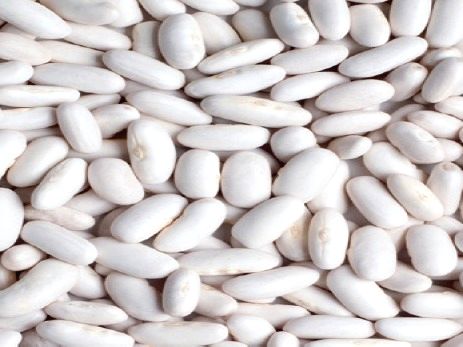Argentina white beans, locally known as “alubia” beans, are a variety of creamy white beans that originate from and are commonly grown in Argentina. Over the years, these beans have garnered worldwide popularity for their delicate flavor, velvety texture and stellar nutritional profile But what exactly are Argentina white beans, and what makes them stand out?
In this complete guide, we will uncover everything there is to know about Argentina white beans – from their history and cultivation to their culinary uses and health benefits. We’ll also look at how they compare to other bean varieties and provide tips for buying, storing and cooking with these versatile legumes. Read on to become a white bean expert!
A Look at the Origins and History
Argentina white beans have a long agricultural history rooted in South America. They are believed to have been cultivated by indigenous communities as part of the “Three Sisters” crop system which also included corn and squash. The beans would grow up the corn stalks while the squash covered the ground below.
When Spanish explorers arrived in South America in the 16th century, they discovered these creamy white beans and brought them back to Europe. From there, their cultivation spread across the globe. However Argentina remains one of the top producers of premium white beans today. They are grown in key regions like Salta, Jujuy and Buenos Aires.
Why Are They Called “Argentina” White Beans?
Though white beans grow in many parts of the world, the varieties from Argentina stand out as exceptional. Argentina’s ideal climate consisting of warm days and cool nights allows the beans to develop their characteristic creamy texture. The mineral-rich soil also lends a more delicate flavor. That’s why beans labelled as “Argentina white” command a premium price – for their sheer quality and renown.
Nutritional Values and Health Benefits
Argentina white beans deliver a powerhouse of nutrition. Below are some of the ways these beans can boost your health:
-
Excellent plant-based protein – 1 cup provides about 15g, meeting 30% of daily needs. This makes them ideal for vegetarians/vegans.
-
High fiber content – 1 cup contains nearly 10g. Fiber promotes digestive and heart health.
-
Low glycemic index – Their slow digestion helps regulate blood sugar. Great for managing diabetes.
-
Iron, magnesium and potassium – Key minerals for blood circulation, bone health and metabolism.
-
Folate – Helps the body make new cells. Important for pregnant women.
-
Antioxidants – Helps reduce inflammation and lower disease risk.
Overall, adding these highly nutritious beans to your diet can help maintain good health and prevent various ailments.
Common Culinary Uses
The mild taste and creamy texture of Argentina white beans allows them to be adapted to a wide array of cuisines and dishes. Here are some of the most popular ways they are used:
-
Soups & stews – Their ability to absorb flavors makes them perfect for hearty dishes.
-
Salads – They lend protein, creaminess and visual appeal to vegetable salads.
-
Baked beans – Often used by Argentines in their version of this classic side dish.
-
Dips & spreads – Great for making plant-based dips like hummus and bean dip.
-
Casseroles and bakes – Mix with veggies, rice or pasta for a one-pot meal.
-
Burgers & meatballs – Used as a binder alternative to breadcrumbs.
With a bit of creativity, the possibilities are endless for cooking with these beans!
How Do They Compare to Other Common Bean Varieties?
Argentina white beans belong to the same species of Phaseolus vulgaris beans as navy beans and great northern beans. However, they have their own unique characteristics:
-
Size – Tend to be larger than navy but smaller than great northern.
-
Texture – Creamier than other white beans with a dense, velvety texture.
-
Flavor – More delicate and nutty tasting than bold flavored navy beans.
-
Appearance – Bright white color and smooth oval shape. Larger than navy beans.
-
Uses – Most similar to use of great northern beans. Better for soups than navy.
While all white bean varieties are nutritious, Argentina beans are set apart by their exceptional texture and flavor.
Tips for Buying and Storing
Follow these tips to select and store Argentina white beans:
-
Look for plump, smooth beans without any cracks or dark spots
-
Avoid beans that appear wrinkled, shriveled or damaged
-
Opt for beans grown in Argentina for best quality
-
Store dried beans in a cool, dry place in an airtight container
-
Kept properly stored, they can last for up to a year
-
Once cooked, store leftover beans in the refrigerator for 3-5 days
-
Frozen cooked beans will keep for several months
Proper storage helps maintain the signature texture and flavor of these special beans.
Simple Serving Ideas and Recipes
Argentina white beans shine in these simple yet delicious recipes:
-
White Bean Salad – Toss cooked beans with tomatoes, corn, onion, cilantro and vinaigrette.
-
White Bean Soup – Puree beans with veggies and broth. Garnish with Parmesan.
-
Bean Burgers – Mash beans with oats, onion, garlic and spices and pan fry into patties.
-
Beans & Greens – Sauté beans with olive oil, garlic and add spinach or kale.
-
Bean Dip – Blend beans, garlic and lemon juice. Serve with crackers or veggies.
With their versatility, the possibilities are endless for enjoying Argentina white beans!

ProductsDiscover White Beans products in Argentina and their specifications offered by suppliers on Tridge.




Basic SuppliersDiscover White Beans basic suppliers in Argentina on Tridge and build business partnerships.



/70x70/company-logo/6a/47/23/6a4723c5252906ccbecf7010a8d240aa74082daa/logo-paramerica.png)


Cannellini Beans Great Northern Beans What’s The Difference
FAQ
What are Argentinian white beans?
What are the 4 types of white beans?
What is another name for white cannellini beans?
Are white beans and lima beans the same?
What are the different types of white beans?
When you explore the varieties of white beans, you’ll come across several types, including Navy beans, Great Northern beans, and Cannellini beans, among others. Each variety holds its unique characteristics, from size and texture to flavor and preferred cooking methods, making them suitable for different dishes.
What are white beans & what do they taste like?
White beans, such as Great Northern, Navy, and Cannellini beans, are known for their mild flavor which allows them to absorb the flavors of foods they’re cooked with. Their textures range from creamy to slightly firm.
What are the best white beans for culinary use?
The best white beans for culinary use depend on the dish you are preparing. Great Northern beans are versatile for a range of recipes, navy beans are superb for soups and stews due to their ability to thicken broth, and cannellini beans are excellent for salads and dishes requiring a firmer texture.
Can white beans be used in Italian food?
Italian Cuisine: Embrace the Italian culinary tradition by incorporating white beans into Italian dishes. They work exceptionally well in Tuscan recipes or as a side to meats and fish. Versatility: Remember the versatility of white beans as a substitute in recipes that traditionally use other beans, adapting the cooking time as needed.
